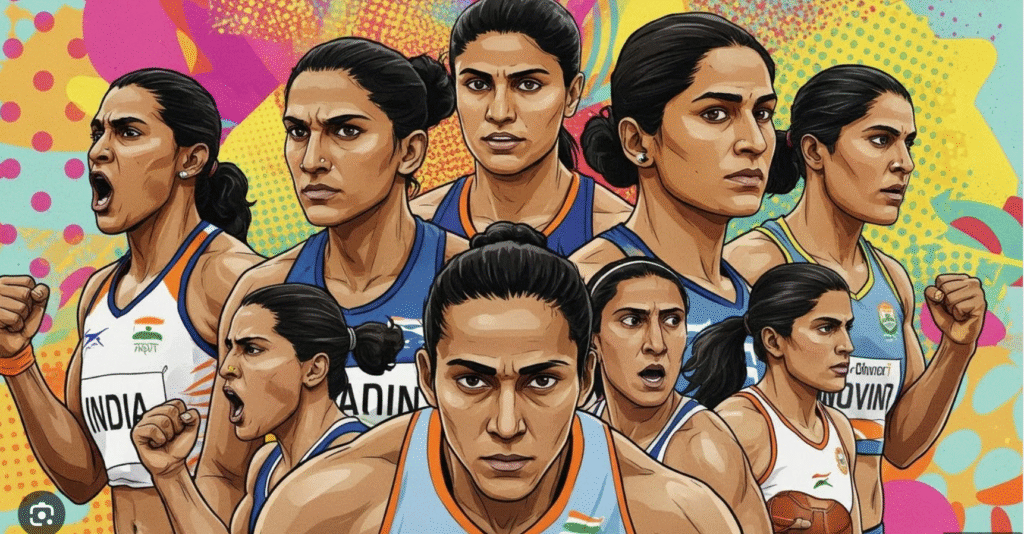In 2025, the definition of an “athlete” has transformed more than ever before. The line between traditional sports and esports is blurring rapidly. While physical strength and agility still define heroes on the football field and the tennis court, digital dexterity and reflexes now shape legends in virtual arenas.
This new era of global sports celebrates young talent who inspire millions both online and offline — redefining what competition, performance, and fame truly mean. Let’s explore how esports and traditional sports athletes are coming together to create a united sporting culture — and meet the top 10 young athletes changing the game in 2025.
🎮 Esports: The Rise of Digital Athletes
Esports has become a billion-dollar global phenomenon. Games like Valorant, Fortnite, League of Legends, and PUBG Mobile have produced stars as recognizable as any footballer. The average esports pro trains up to 10 hours a day — mastering reflexes, team strategy, and mental focus.
Unlike traditional sports, esports offers accessibility; a gaming setup and internet connection are the gateways to international fame. In 2025, esports viewership is projected to surpass 640 million, nearly rivaling the Olympics in global reach.
⚽ Traditional Sports: Power, Passion, and Legacy
Traditional sports remain the foundation of global athleticism. From football and cricket to athletics and tennis, young players are rewriting record books and building on the legacy of greats. However, these athletes are also embracing technology — using AI-based training, VR simulations, and data analytics to elevate their performance, much like esports players.
The fusion of physical and digital performance is the essence of 2025 sports culture.
🌟 Top 10 Young Athletes Redefining Global Sports in 2025
| Rank | Athlete | Country | Sport Type | Highlight Achievement 2025 | Why They Stand Out |
|---|---|---|---|---|---|
| 1 | Luke “Vortex” Reynolds | USA | Esports (Valorant) | Won Valorant Champions 2025 | Known for sharp reflexes and game IQ, blending fitness with esports training |
| 2 | Aarav Sharma | India | Cricket | Scored fastest ODI 150 at age 20 | Symbol of new-age Indian cricket powered by data analytics |
| 3 | Mina Kobayashi | Japan | Esports (League of Legends) | First female MVP in LoL Worlds | Breaks gender barriers and redefines esports professionalism |
| 4 | Sofia Alvarez | Spain | Football (Soccer) | Youngest captain in La Liga Women | Combines tactical gameplay inspired by FIFA esports simulations |
| 5 | Ethan Brooks | UK | Esports (FIFA 25) | FIFAe World Cup Winner | Merges real football strategy and digital skill |
| 6 | Noah Martinez | Brazil | Football | Breakout player in Copa America 2025 | Collaborates with esports influencers to reach global youth |
| 7 | Li Wei | China | Esports (PUBG Mobile) | Global Championship Winner | Symbol of China’s dominance in mobile gaming and precision esports |
| 8 | Olivia Grant | Australia | Tennis | Won Australian Open 2025 | Uses VR training and analytics borrowed from esports science |
| 9 | Rafael “ShadowKing” Duarte | Portugal | Esports (Fortnite) | Won Fortnite Global Cup 2025 | Combines gaming with fitness and mental training |
| 10 | Zara Khan | Pakistan | Athletics (100m Sprint) | Set new Asian record at age 19 | Uses data tracking similar to esports for speed optimization |
🌍 Blurring the Line Between Real and Virtual
The difference between esports and traditional sports is no longer about physicality — it’s about discipline, performance metrics, and entertainment value. Both require years of training, strategy, and psychological strength. Many professional teams now have both esports and field divisions, sharing branding and sponsorships.
Moreover, young fans follow both fields with equal passion. A gamer might idolize both Lionel Messi and TenZ — proving that global sports identity is evolving beyond categories.
💡 Technology: The Common Language of Performance
In 2025, technology bridges all sports:
-
AI analytics improve both player reactions and game strategies.
-
Wearable sensors track stress, reflexes, and reaction time.
-
VR training allows athletes to simulate gameplay, whether in a tennis rally or a battle arena.
Both esports and traditional sports athletes are now measured by data, driven by psychology, and inspired by fans worldwide.
🏁 The Future of Competition
The next generation of athletes are hybrid performers — equally skilled with a controller or a cricket bat. The rise of cross-training between esports and physical sports shows that focus, endurance, and teamwork are universal values.
By 2030, we may see Olympic-level esports tournaments and shared awards recognizing both digital and traditional excellence.
The era of rivalry is ending — the era of collaboration between real and virtual champions has begun.
📋 Quick Summary Table
| Aspect | Esports | Traditional Sports |
|---|---|---|
| Training Focus | Reflexes, strategy, digital coordination | Physical strength, endurance, technique |
| Accessibility | High (anyone with internet) | Moderate (requires facilities, gear) |
| Audience in 2025 | 640+ million viewers | 700+ million for global sports leagues |
| Top Young Star 2025 | Luke “Vortex” Reynolds | Aarav Sharma |
| Crossover Trend | Athletes using VR, AI analytics | Gamers using fitness and mindfulness routines |
| Defining Skill | Precision & reaction time | Agility & decision-making |
| Cultural Impact | Youth-driven, digital communities | Legacy-driven, national pride |
| Sponsorships | Tech, energy drinks, gaming brands | Apparel, telecom, sportswear |
| Event Formats | Online & hybrid tournaments | Stadium & broadcast matches |
| Future Outlook | Integration with Olympic events | Tech-enhanced performance evolution |



